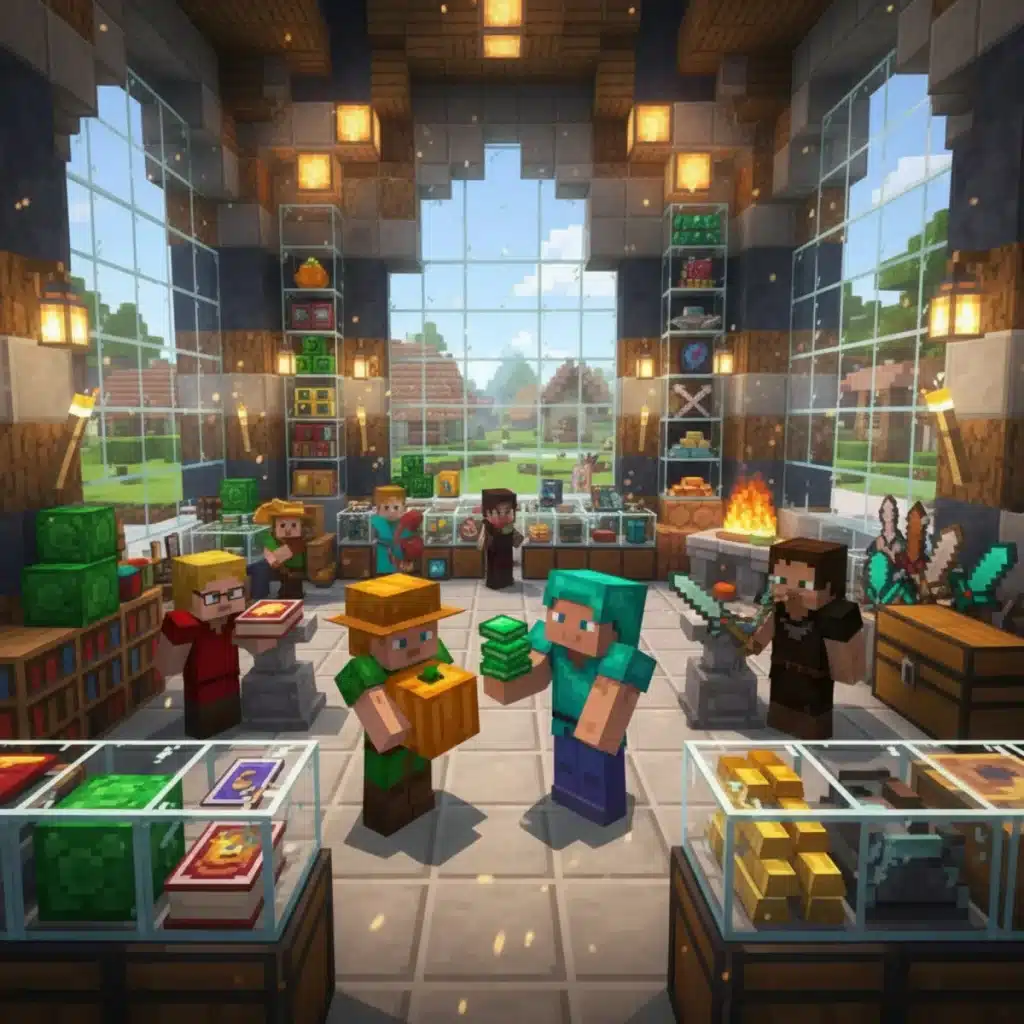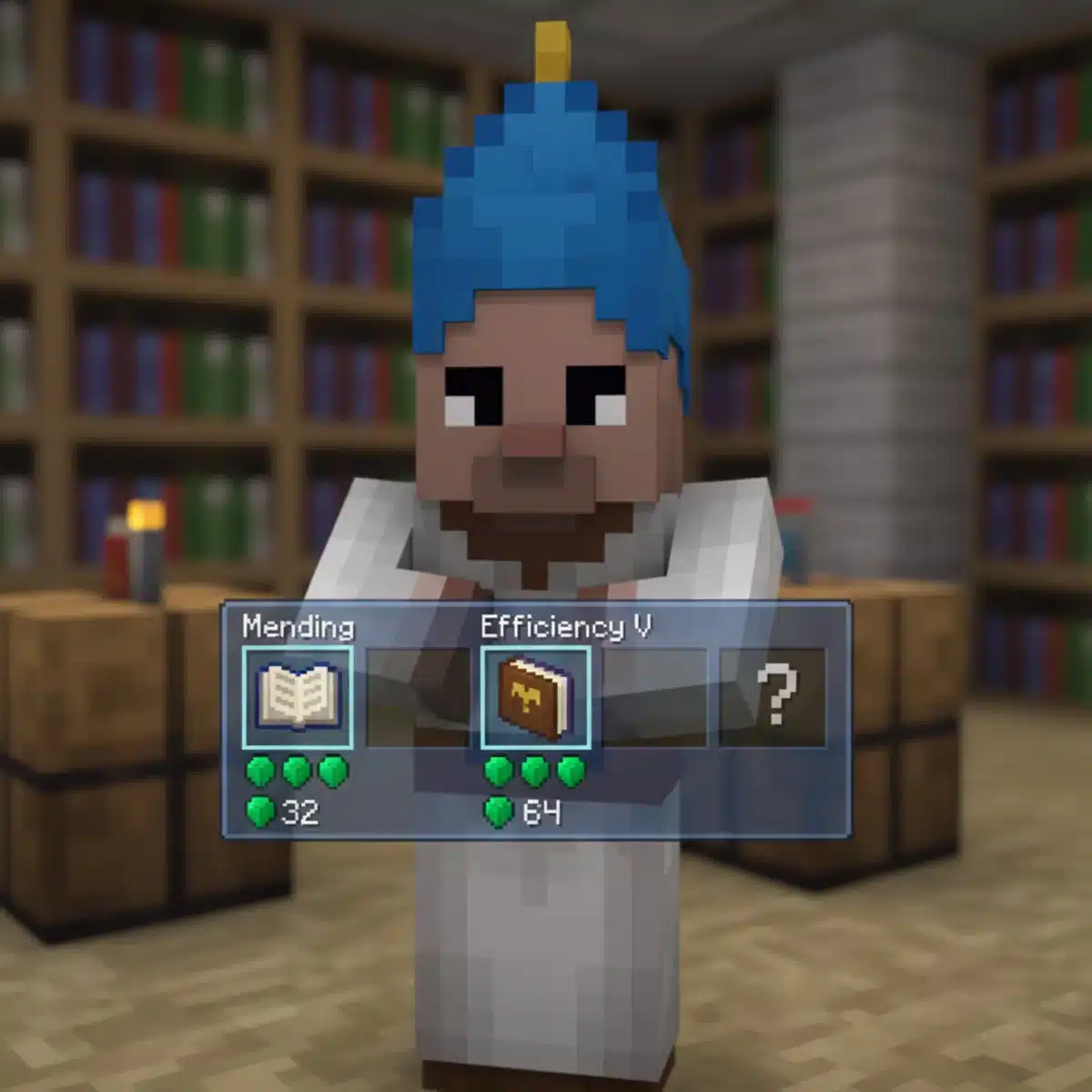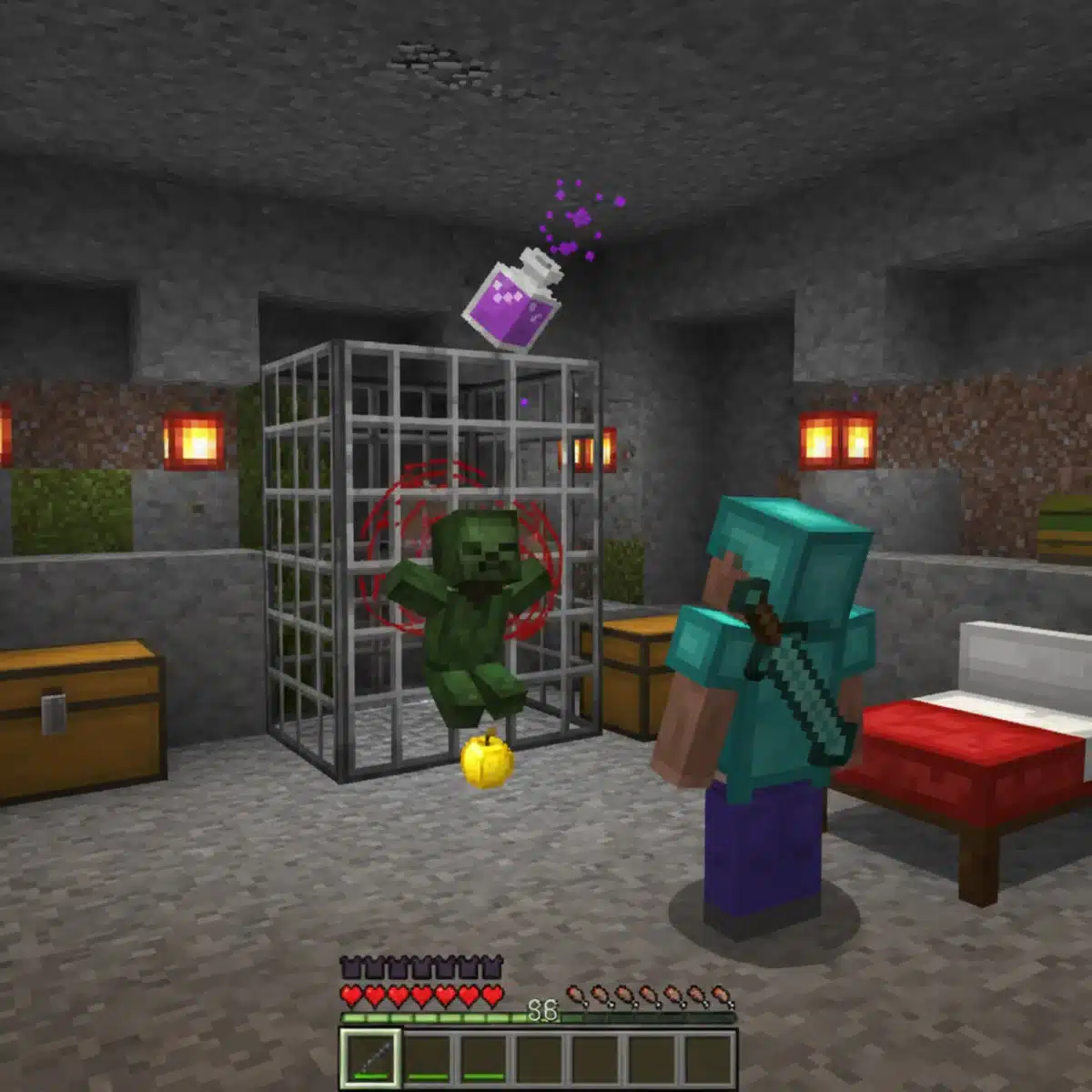Minecraft Villager Trading: Best Deals Guide 2025

Advertisements
Mastering Minecraft villager trading in 2025 is essential for resource acquisition and game progression, requiring strategic understanding of professions, discounts, and trade resets to secure the best possible deals.
Welcome, fellow crafters, to the ultimate guide on Minecraft Villager Trading for 2025! If you’re looking to elevate your gameplay, secure rare items, and build an efficient in-game economy, understanding the intricacies of villager trades is absolutely crucial. This guide will equip you with the knowledge to get the best deals, optimize your trading setups, and become a master negotiator in the blocky world.
Anúncios
Understanding Villager Mechanics and Professions
Before diving into the best deals, it’s vital to grasp how villagers operate in Minecraft. These friendly NPCs are the backbone of a thriving in-game economy, offering a wide array of items in exchange for emeralds, and sometimes other goods. Each villager has a specific profession, which dictates the types of trades they offer. Knowing these professions and their potential trades is the first step toward maximizing your profits and acquiring valuable resources.
Villagers acquire professions by interacting with a specific job site block. For instance, a Fletcher needs a Fletching Table, a Librarian needs a Lectern, and a Farmer needs a Composter. Once a villager claims a job site block, they adopt that profession and begin offering trades. Their trades can level up as you complete more transactions, unlocking new and often more valuable items.
Anúncios
Key Villager Professions and Their Offerings
Different professions bring different opportunities. Some professions are universally useful, while others are more niche. Understanding what each villager type can offer is key to setting up an effective trading hall.
- Librarian: Arguably one of the most sought-after villagers. Librarians trade enchanted books, including highly valuable ones like Mending, Unbreaking III, and Efficiency V. They also offer name tags and bookshelves.
- Toolsmith/Weaponsmith/Armorer: These villagers provide enchanted diamond gear, iron tools, and armor. They are excellent sources for high-tier equipment, often at a better price than crafting.
- Farmer: Farmers trade various crops, bread, and even suspicious stew. They are useful for establishing reliable food sources and converting excess crops into emeralds.
- Cleric: Clerics trade rotten flesh for emeralds, offer Bottles o’ Enchanting, ender pearls, and even redstone dust. They are great for converting mob drops into valuable resources.
Each profession has multiple trade tiers, and leveling up a villager involves completing trades from their current tier. The more you trade, the higher their level becomes, and the better the items they might offer in subsequent tiers. This progression system encourages consistent interaction and strategic planning.
Optimizing Your Trading Hall Layouts
A well-designed trading hall is not just about aesthetics; it’s about efficiency and convenience. In 2025, advanced players are constantly refining their layouts to make villager management and trading as seamless as possible. The goal is to easily access villagers, manage their professions, and facilitate quick trades without unnecessary hassle.
Consider building individual cells for each villager, ensuring they have access to their job site block and a bed. The bed is crucial for them to rest and replenish trades. Placing the job site block directly in front of their trading window allows for easy interaction. For larger trading halls, consider a railway system or water streams to move villagers into position, especially when initially populating the area.
Efficient Villager Management Techniques
Managing a large number of villagers can be tricky, but with the right techniques, it becomes much simpler. Proper organization helps in identifying specific villagers and their trades quickly.
- Labeling: Use item frames or signs to clearly label each villager’s profession and their most valuable trades. This saves time when you’re looking for a specific item.
- Isolation: Keep villagers separated to prevent them from stealing each other’s job site blocks. This is especially important if you’re trying to roll specific trades by breaking and replacing job blocks.
- Lighting: Ensure your trading hall is well-lit to prevent hostile mob spawns. Torches, glowstone, or sea lanterns are effective options.
Furthermore, consider building your trading hall near your main base or a resource farm. This reduces travel time and makes it easier to transport goods for trading. A dedicated trading hall can become a central hub for all your advanced resource acquisition.
Mastering Trade Discounts and Reputation
Getting the best deals in Minecraft villager trading often comes down to understanding and manipulating trade discounts. Villagers offer reduced prices based on their reputation with the player and certain in-game events. Knowing how to trigger these discounts can save you a significant amount of emeralds and items.
Your reputation with a villager, and by extension, an entire village, is influenced by your actions. Trading frequently with a villager generally improves your standing, leading to slight discounts. However, the most significant discounts come from specific events, particularly saving villagers from zombie attacks or curing a zombie villager.
Curing Zombie Villagers: The Ultimate Discount Strategy
Curing a zombie villager is hands down the best way to get massive, permanent discounts on trades. A cured zombie villager will offer trades at a significantly reduced price, sometimes as low as one emerald for items that usually cost dozens. This discount stacks with other reputation bonuses, making it incredibly powerful.
The process involves trapping a zombie villager, weakening it with a Splash Potion of Weakness, and then feeding it a Golden Apple. After a few minutes, the zombie villager will transform back into a regular villager, offering drastically reduced prices. It’s a bit of an investment in resources, but the long-term benefits are immense.

The process involves trapping a zombie villager, weakening it with a Splash Potion of Weakness, and then feeding it a Golden Apple. After a few minutes, the zombie villager will transform back into a regular villager, offering drastically reduced prices. It’s a bit of an investment in resources, but the long-term benefits are immense.
- Setup: Create a safe, enclosed area to trap the zombie villager.
- Weakness Potion: Brew a Splash Potion of Weakness using a fermented spider eye.
- Golden Apple: Craft a Golden Apple with gold ingots around an apple.
- Cure: Throw the potion at the zombie villager and then right-click with the golden apple.
The discount from curing a zombie villager is permanent and applies to all trades offered by that specific villager. It’s a game-changer for acquiring enchanted books, diamond gear, and other expensive items at a fraction of their original cost. Consider building a dedicated zombie villager curing station near your trading hall for easy access.
Maximizing Trade Refresh and Restocking
Villager trades don’t last forever; they restock at certain times of the day. Understanding the trade refresh mechanic is crucial for consistent trading and ensuring you always have access to the items you need. Villagers restock their trades twice a day, during specific in-game time windows.
For a villager to restock their trades, they need to have access to their job site block and have slept in a bed recently. If a villager cannot reach their job site block or has not slept, their trades will not replenish. This is why a well-designed trading hall with individual cells and proper job block placement is so important.
Strategies for Consistent Trade Availability
To ensure your villagers are always ready to trade, implement these strategies:
- Job Site Block Access: Always ensure the villager’s job site block is accessible to them. If you break and replace a job site block to re-roll trades, remember to place it back.
- Bed Access: Each villager needs a bed. While they don’t necessarily have to sleep in it every night, having one nearby helps them recognize it as their home and facilitates trade restocking.
- Time Management: Villagers restock during specific in-game hours (around sunrise and sunset). If you’re actively trading, be mindful of these times to maximize your efficiency.
Additionally, remember that villagers will only restock if they are willing to trade. If you’ve been hitting a villager or attacking other villagers in their presence, their willingness to trade might decrease, temporarily preventing restocking. Maintaining a good reputation helps ensure smooth operations.
Advanced Trading Strategies for Rare Items
Beyond basic trading, there are advanced strategies that can help you acquire some of the rarest and most powerful items in Minecraft. These often involve specific villager types and a bit of patience, but the rewards are well worth the effort. Knowing which villagers to focus on for particular items can save you countless hours of mining and searching.
Librarians, in particular, are central to many advanced strategies due to their ability to trade enchanted books. Finding a librarian that offers the Mending enchantment book for a low price is a top priority for most players, as Mending is one of the most powerful enchantments in the game.
Targeting Specific Enchantments and Items
When seeking specific enchantments or rare items, a targeted approach is most effective. This often involves repeatedly breaking and replacing a villager’s job site block until they offer the desired trade.
- Librarian Re-rolling: Place a Lectern for an unemployed villager. Check their first trade. If it’s not Mending or another desired enchantment, break the Lectern and place it again. Repeat until you get the desired trade. Do not trade with them until you get the desired enchantment, or the trade will lock.
- Cartographer for Ocean Monuments: Cartographers can trade ocean explorer maps and woodland explorer maps, which lead to rare structures like Ocean Monuments and Woodland Mansions, offering unique loot.
- Armorer/Weaponsmith for Diamond Gear: These villagers can offer enchanted diamond armor and weapons, sometimes with excellent enchantments, saving you resources on crafting and enchanting.
This method of re-rolling trades requires patience but guarantees you get the specific items you need without relying on random chance from enchantment tables or dungeon chests. It’s a cornerstone of late-game resource acquisition.
Automating Resource Collection for Trading
To truly master Minecraft villager trading in 2025, you’ll want to automate as much of your resource collection as possible. Having a steady supply of trade goods means you’ll always be able to get the emeralds and items you need without tedious manual farming. This involves building efficient farms for various items that villagers want.
Think about what villagers trade for. Farmers want crops, Clerics want rotten flesh, Fletchers want sticks, and many villagers accept common resources like coal or iron. Building automated farms for these resources ensures you have an endless supply to convert into emeralds or other valuable items through trading.

Essential Farms for a Trading Economy
Consider setting up these automated farms to fuel your trading empire:
- Crop Farms (Wheat, Carrots, Potatoes): Farmers will happily trade emeralds for these. Fully automated farms using villagers or redstone can produce massive quantities.
- Wood/Stick Farms: Fletchers trade sticks for emeralds, making a simple tree farm or even a fully automated wood farm highly profitable.
- Iron Golem Farms: Iron golems drop iron ingots, which can be traded with armorers, toolsmiths, and weaponsmiths. An iron farm is one of the most lucrative automated setups.
- Mob Farms: General mob farms provide rotten flesh for Clerics and string for Fletchers, plus other useful drops.
By integrating these automated systems with your trading hall, you create a powerful economic loop. Resources flow from your farms to your villagers, generating emeralds and rare items, which then fuel further enchantments, gear, and base improvements. This synergy is what truly sets apart a basic player from a trading master.
Future-Proofing Your Trading Empire in 2025
Minecraft is constantly evolving, with updates that can subtly or significantly change game mechanics. While the core principles of villager trading have remained relatively consistent, staying informed about potential changes is key to future-proofing your trading empire. Always keep an eye on official Minecraft announcements and community discussions.
In 2025, the community continues to explore new efficiencies and potential exploits. Adaptability is your greatest asset. If a trade is nerfed or a new mechanic is introduced, being able to quickly adjust your strategies will keep you ahead of the curve. This means not just building, but understanding the underlying systems.
Staying Ahead of the Curve
- Community Resources: Actively engage with the Minecraft community. Forums, wikis, and content creators often share insights into new discoveries and changes.
- Experimental Features: Pay attention to experimental features in snapshots or beta versions. These can hint at upcoming changes that might affect villager trading.
- Redundancy: Don’t put all your eggs in one basket. Relying too heavily on a single trade or villager type can be risky if that trade is altered in an update. Diversify your trading portfolio.
Ultimately, a robust understanding of Minecraft’s mechanics, combined with a willingness to experiment and adapt, will ensure your villager trading operations remain profitable and efficient for years to come. The game is a sandbox, and continuous learning is part of the adventure.
| Key Aspect | Brief Description |
|---|---|
| Villager Professions | Each villager profession (e.g., Librarian, Farmer) offers unique trades, dictated by their job site block. |
| Trade Discounts | Curing zombie villagers provides significant, permanent trade discounts, making items much cheaper. |
| Trade Restocking | Villagers restock trades twice daily if they have access to their job site block and a bed. |
| Automated Farms | Automating resource collection (e.g., iron, crops) ensures a steady supply of goods for trading. |
Frequently Asked Questions About Villager Trading
To get Mending from a villager, you need a Librarian. Place a Lectern for an unemployed villager and check their first trade. If it’s not Mending, break the Lectern and place it again. Repeat this process until Mending appears as their initial trade. Once it does, trade with them to lock it in.
The most effective method for getting significant trade discounts is by curing zombie villagers. When you weaken a zombie villager with a Splash Potion of Weakness and then feed it a Golden Apple, it will convert back to a regular villager with permanently reduced trade prices.
Villagers typically restock their trades twice per Minecraft day. For this to happen, they need to have access to their assigned job site block and must have slept in a bed recently. Ensure their path to both is clear within your trading setup.
The Librarian villager is widely considered the most useful for late-game Minecraft. They offer highly valuable enchanted books like Mending, Unbreaking III, and Efficiency V, which are crucial for maintaining and upgrading your tools and armor, making them indispensable.
Yes, you can change a villager’s profession as long as you haven’t traded with them. To do so, simply break their current job site block. The villager will become unemployed, and you can then place a different job site block for them to adopt a new profession and new trades.
Conclusion
Mastering Minecraft villager trading is an art form that significantly enhances your gameplay experience, transforming mundane resource gathering into a strategic economic endeavor. By understanding villager mechanics, optimizing your trading hall, utilizing discount strategies like curing zombie villagers, and automating resource collection, you can unlock an unparalleled level of efficiency and access to rare items. As Minecraft continues to evolve, staying informed and adaptable will ensure your trading empire thrives, making your journey through the blocky world richer and more rewarding.





